[ad_1]
On February 27, at Paris Fashion Week, Dior went back to the 60s. But instead of leaning into its ‘swinging’ tag, creative director Maria Grazia Chiuri had her models wend their way around life-size, cage-like cane forms. Crafted by Mumbai-based artist Shakuntala Kulkarni, the commanding pieces placed at the centre of the runway in Tuileries Garden brought to mind many things: ancient carapaces, imposing samurai yoroi (armour), but also a sense of strength.
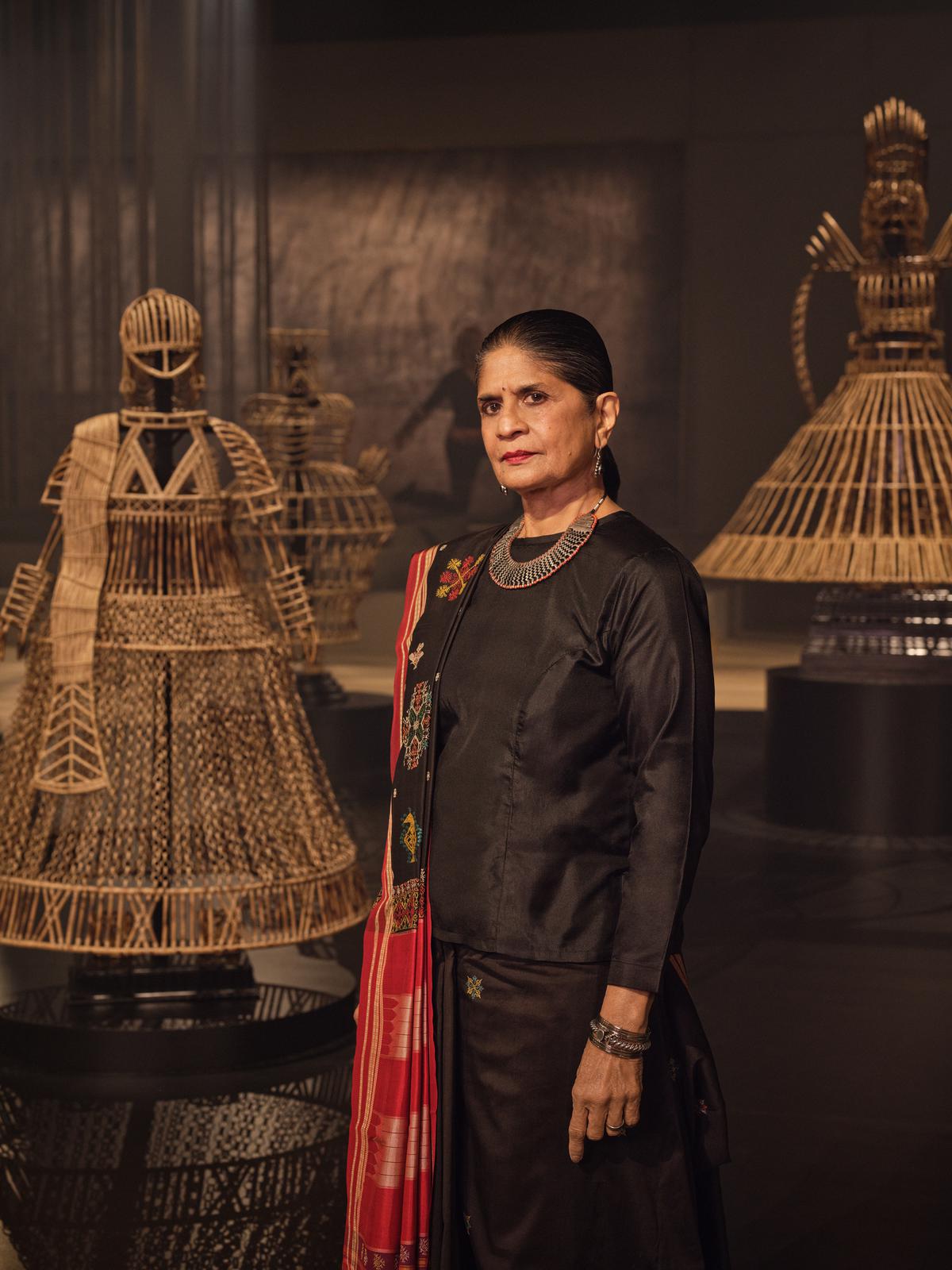
While Chiuri’s Fall/Winter 2024-2025 collection focused on the decade of liberated fashion — a transitional era that brought with it the duality of classic fashion and ready-to-wear — Kulkarni’s sculptures offset it perfectly with its symbolised dichotomy of notions of protection and restricted movement. “We were speaking about women’s empowerment and freedom,” says the multimedia artist, 74. “Maria was looking at the new woman and so was I, or rather the possibility of who she could become. Strength and energy, grace and dignity. Maria used fabric and I used cane as fabric to protect.”
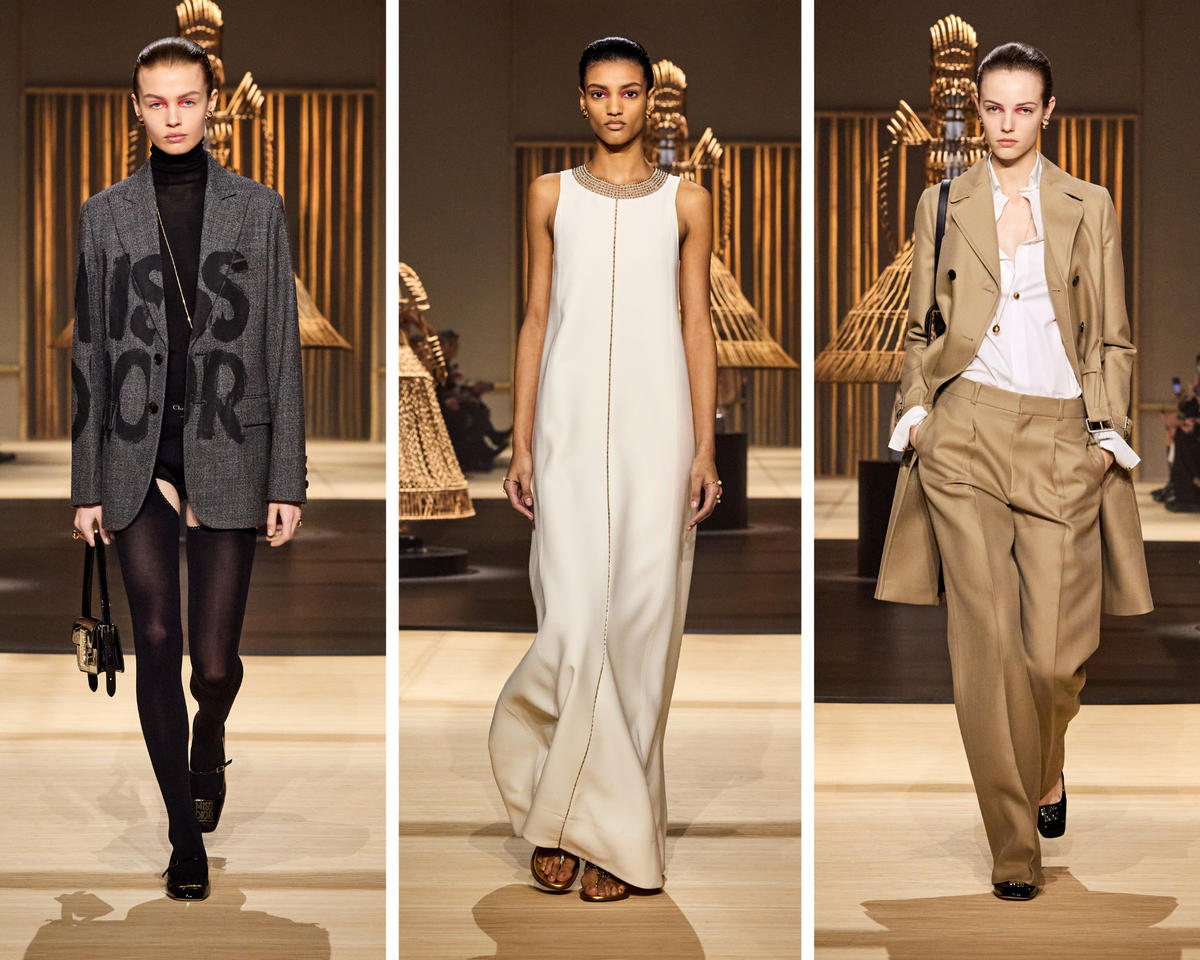
As the world takes notice of Kulkarni’s 12-year questioning of women’s body politics, she tells the Magazine about the collaboration with the French fashion house and why the message of her cane armour is always important.
How did the collaboration with Dior come about?
One of Dior’s directors walked into Chemould Prescott Road some time in March or April last year, during my exhibition Quieter than Silence – Compilation of Short Stories. He saw my catalogues of Juloos [a four-screen video installation created in 2015] and Of Bodies, Armour and Cages, and gave it to Maria Grazia Chiuri. When I had a conversation with Maria, I realised that we were both speaking about women’s empowerment and freedom. She was looking at the new woman and so was I — or rather the possibility of who she is, of who she could become. I love movement; I use body language in my films and installations. Hence, the models walking in choreographed movements appealed to me. It was a great experience working together and an opportunity to create an installation in a huge space.
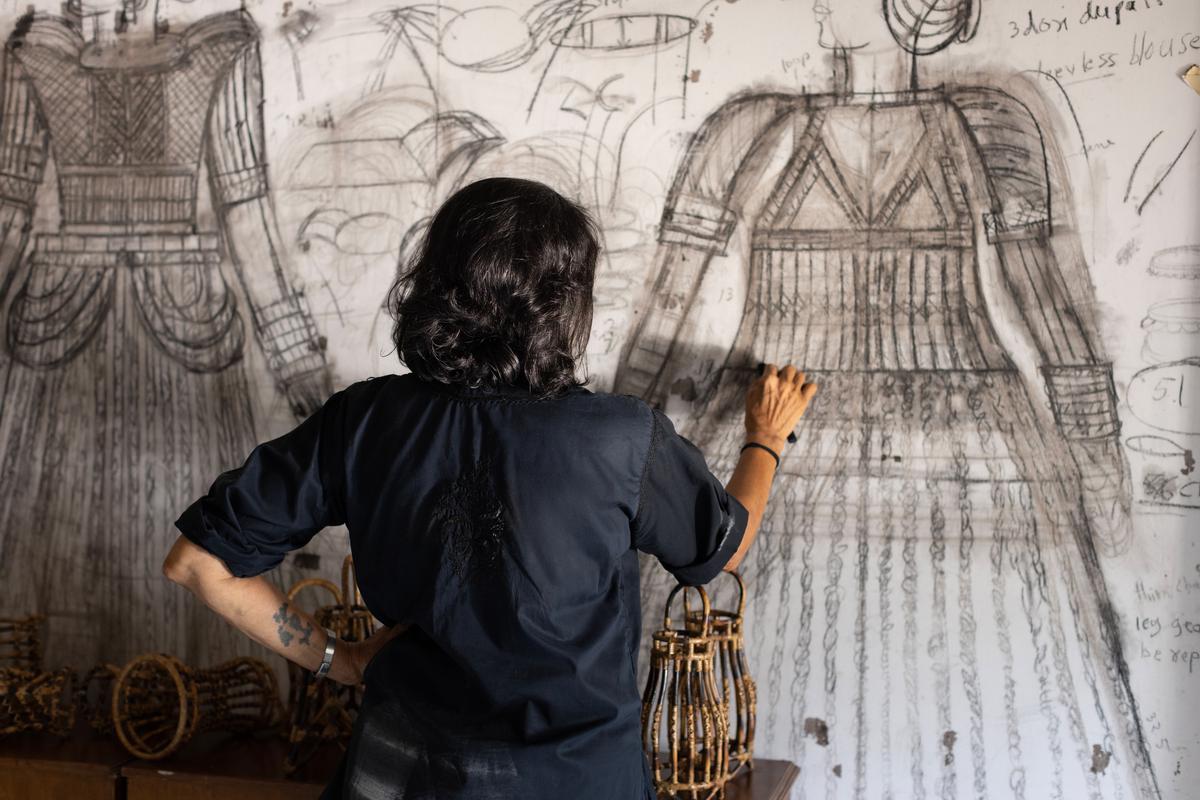
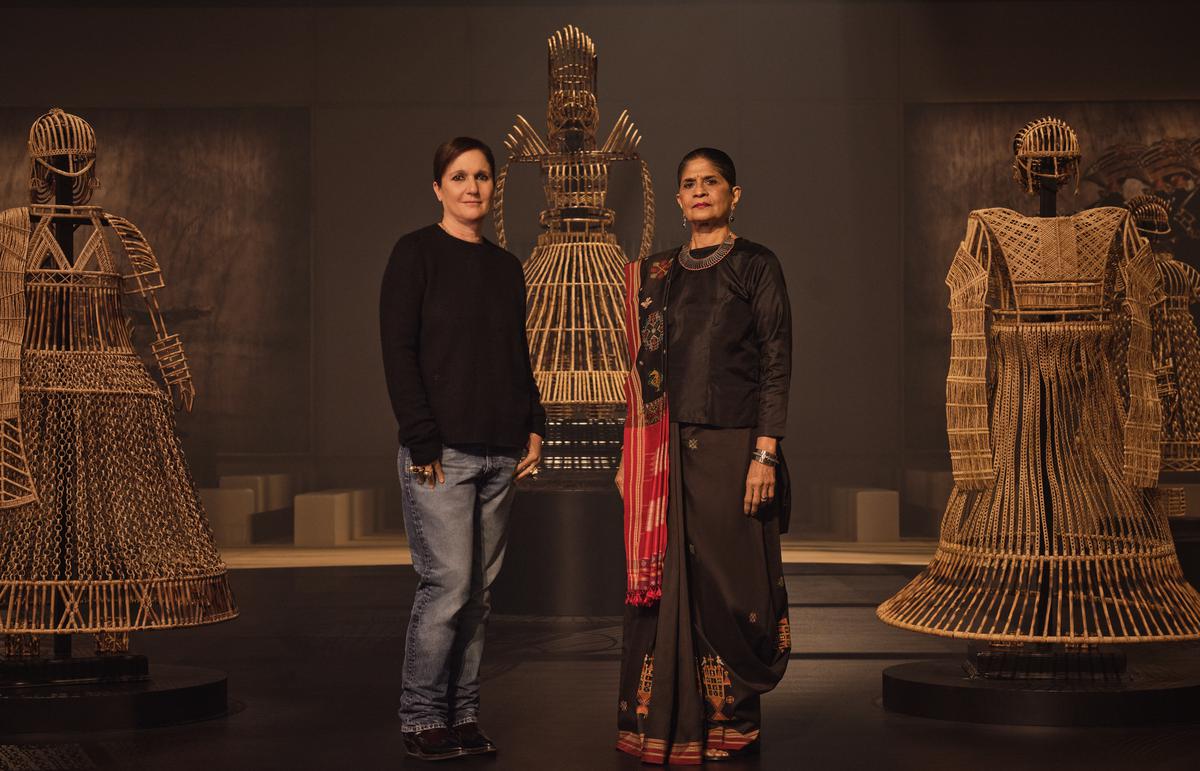
Kulkarni with Dior’s creative director Maria Grazia Chiuri
What inspired you to focus on the female body and its attendant vulnerabilities?
I come from a very open and forward-looking family. I experienced no restrictions till I went to college. Out in the world, however, I experienced discrimination — through personal and shared experiences, through literature, through theatre and films. I saw how this creates fear, discomfort and anxiety for women, sometimes subtly and sometimes loudly. I started inquiring into the violation of the female spaces both in private and public. Theatre has been a huge influence on my work. Hence, I started inviting my viewers to participate in the work, and experience the fear or discomfort women experience within society, which is essentially patriarchal. I have used my body as a site to express all this through video performances, photo performances, live performances, installations, drawing and later by using cane for the armour.
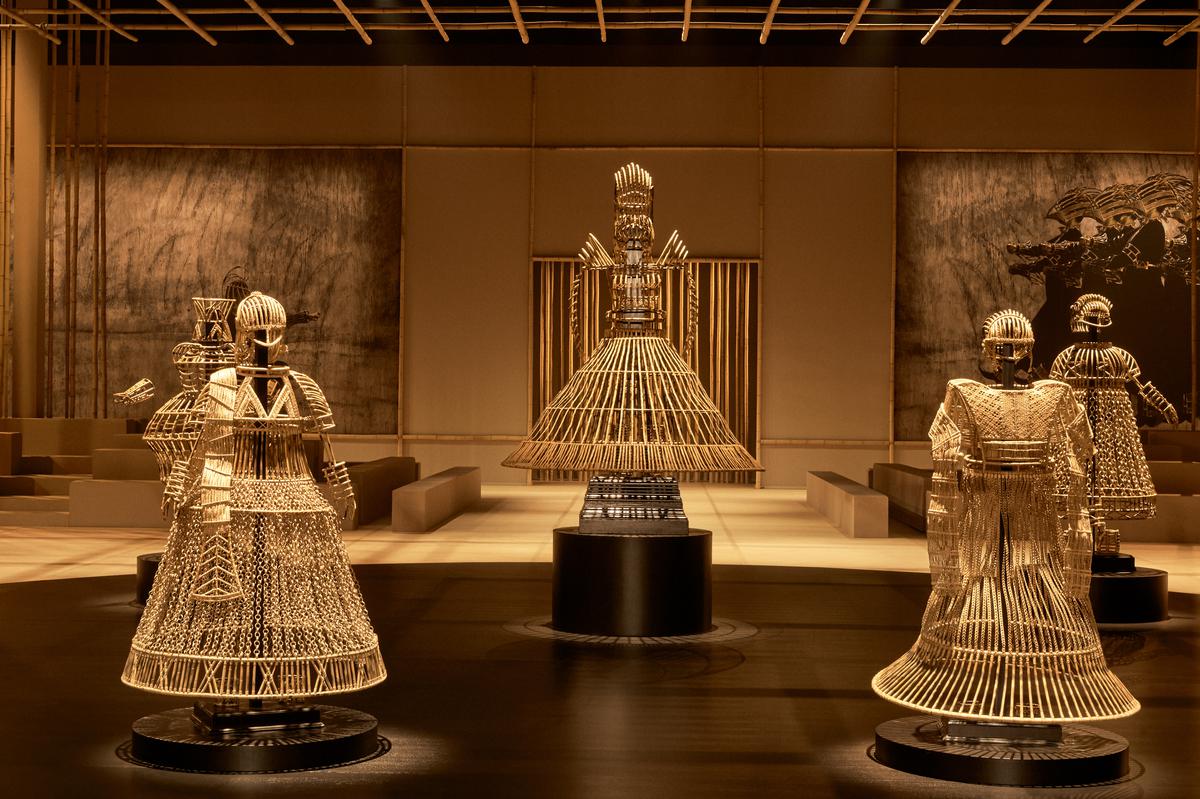
Armour of the Brides installation
Your series of armour protects the body but traps it too. Why the dichotomy?
Once, when I was walking in a crowded place in Mumbai, drops of tar fell on me and burned parts of my body. It triggered the notion of protection in public spaces. I was also reading about the rapes in India, and I felt responsible to address it. Thus, the notion of protecting the body from atrocities and violence came up. I designed the armour in such a way that it was a metaphor for protection even as it trapped the body within its cage-like structure. Marriages are supposed to protect a girl, but sometimes atrocities are committed against her. There are honour killings, dowry deaths, consumption, objectification. These are just a few examples to clarify why the armour is used as both protection and as a cage for trapping the female body within the patriarchal society.
Why did you choose cane as your medium?
I have always loved cane. It is from a creeper family that looks delicate, but it is tenacious. When joined by cane thread, it is flexible; it can be bent and twisted when it is heated. It is also monochromatic with shades of black that are interesting.
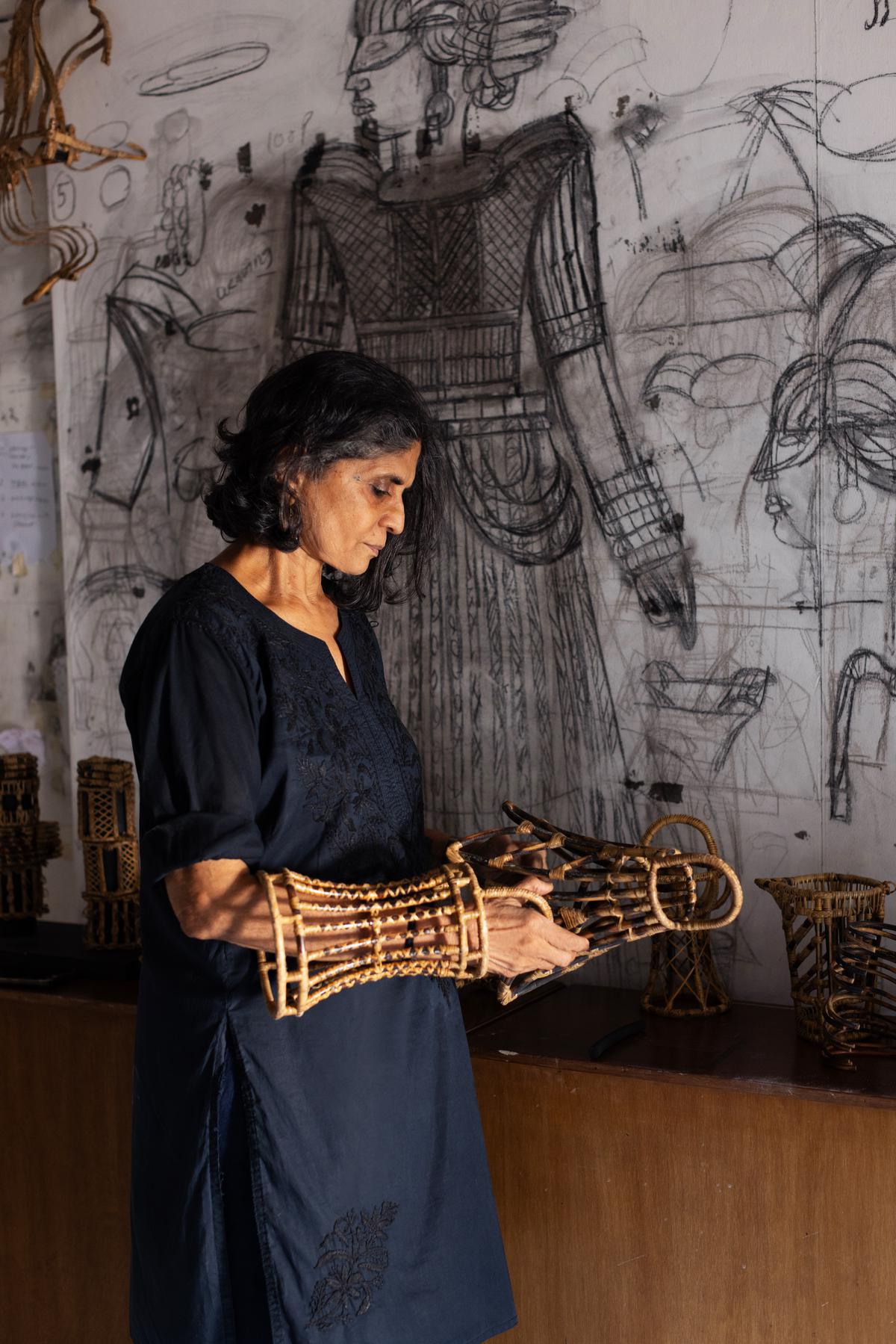
Kulkarni testing her armour
How many pieces have you created till date?
Between 2010 and 2012, I made 11 armours, followed by three more in the next two years. They belonged to a project titled Of Bodies, Armour and Cages. In 2015, I took parts of cane armour and cane jewellery to create Juloos — a four-screen video installation that speaks to a vision of power, freedom, self-expression, dignity, grace, respect and solidarity. In 2022, I made another four, and last year five pieces for a project called Armour for the Brides. I researched different headgears and dresses, and looked at masks from different countries and cultures for it. The hairdos were inspired by Roman sculptures to Bollywood hairstyles of the 60s and 70s, while the outfits ranged from Rajasthani ghagras to Kathakali costumes and colonial dresses. [I even incorporated] the wedding dress and mini skirts that my daughter wore and my son’s dungarees. Each armour can take anywhere from one to three months depending on its complexity.
Since you created the first armour in 2012, have your views on the threats faced by women changed?
Threats to women continue. Though many are economically independent and confident today, and so are able to deal with threats, many others are still struggling. So, I will continue to address victimisation and power. The cane armour speaks about the vulnerability of the trapped body versus safety and protection from atrocities.
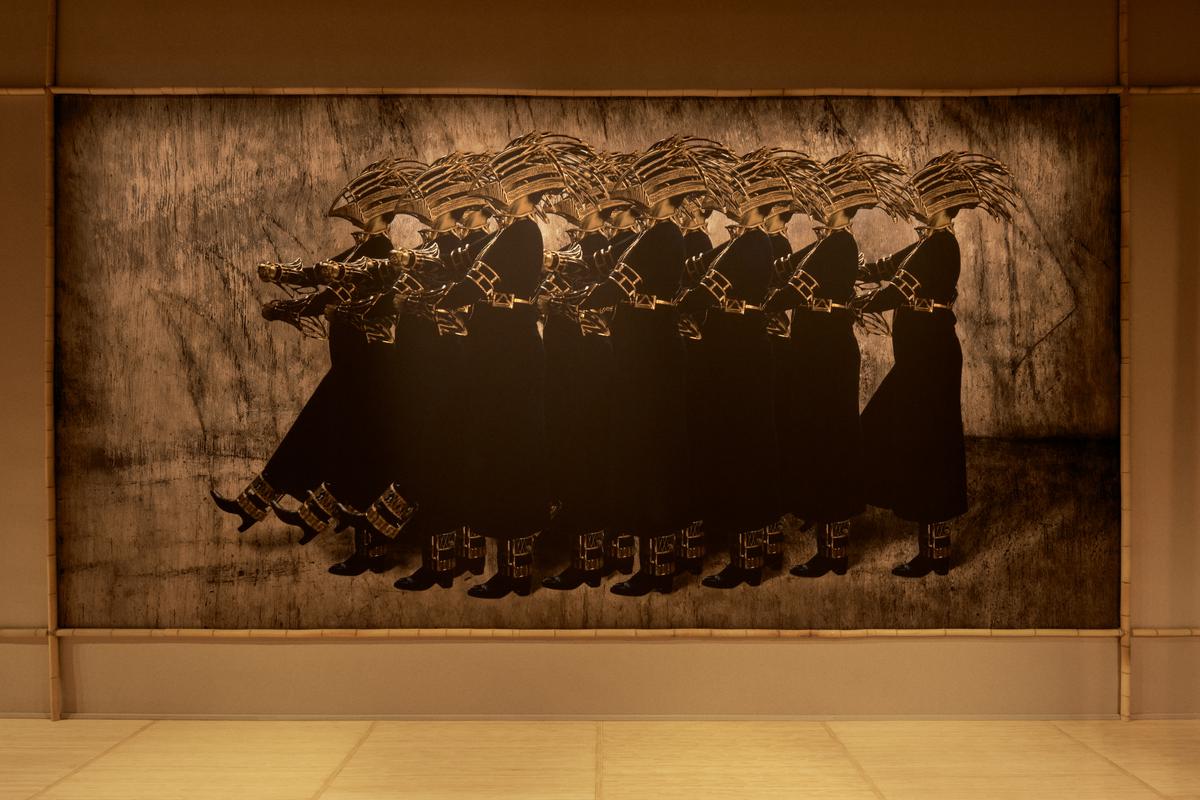
Panel depicting a still from Juloos
What is your relationship with clothing?
I have a fondness for clothing and textiles. My babies were wrapped in soft cloth, and covered by a quilt made by my grandmother and mother. My mother stitches clothes for me and my children. So, I have a tender, loving relationship with cloth. It is used for different purposes: protecting the body, beautifying it, respecting it, admiring it. In my day-to-day life, I prefer cotton, and wear jeans or a kurta pyjama. For an event, I choose a sari, kurta pyjama or lungi. I love to collect saris from the loom if possible, or traditional ones from different parts of India. My collection of lungis is from various countries, including Sri Lanka, India and Bhutan.
What are you working on next?
I never have an idea till something triggers a concept or an image.
The writer is based in Mumbai.
[ad_2]





